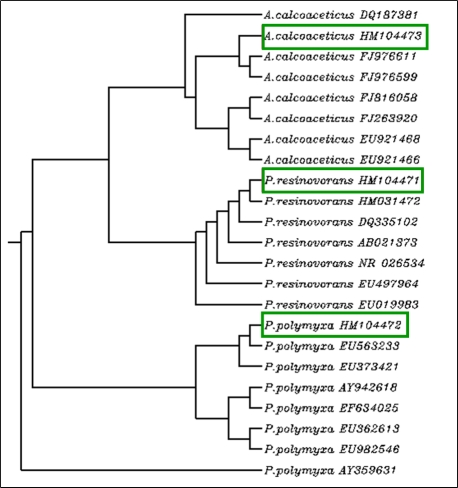Figure 2.
Rooted dendrogram showing clustering of Psuedomonas resinovorans, Paenibacillus polymaxa, and Acenitobacter calcoaceticus isolated from medicinally important Gynura procumbens leaves tissue. Dendrogram was constructed using 16S rDNA sequences of three isolates and other strains of respective species reported from different parts of the world. The 16S rDNA sequences for different strains of respective bacterial species were obtained from NCBI database. The multiple sequence alignment (MSA) of 16S rDNA sequences was carried out using ClustalW (ver. 1.6) by applying default parameters. The MSA output from ClustalW was used for the construction of a rooted dendrogram using NJ (Neighbour Joining) method of Saitou and Nei provided at the http://align.genome.jp/. In the phylogenetic tree, locations of three isolates from G. procumbens are shown in green boxes and source of other strains is given in Table 2 (see supplementary material). The accession number of the respective 16S rDNA sequence is given in front of the respective species (strain) name.

